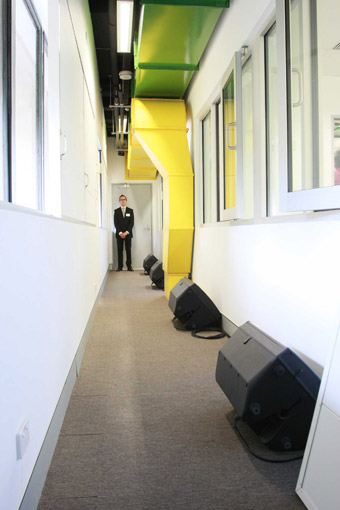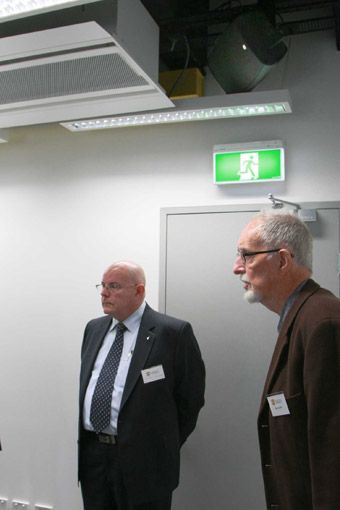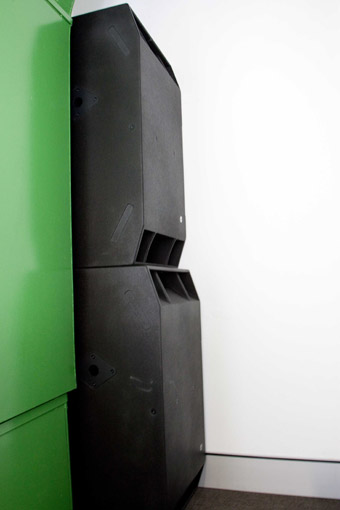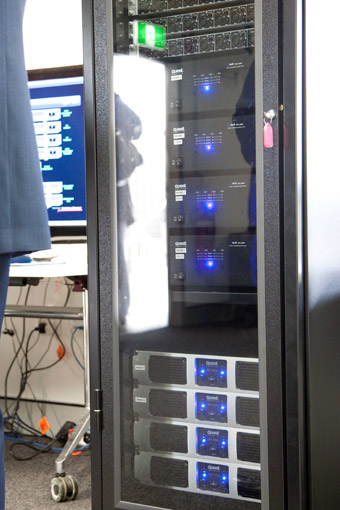Sydney University creates better environment with Quest
The Sydney University Department of Architecture, Design and Planning have developed a specialized facility to study and model indoor environmental quality from both a work efficiency and quality of life point of view. The quality of our working environment influences not only our productivity, but also our health.
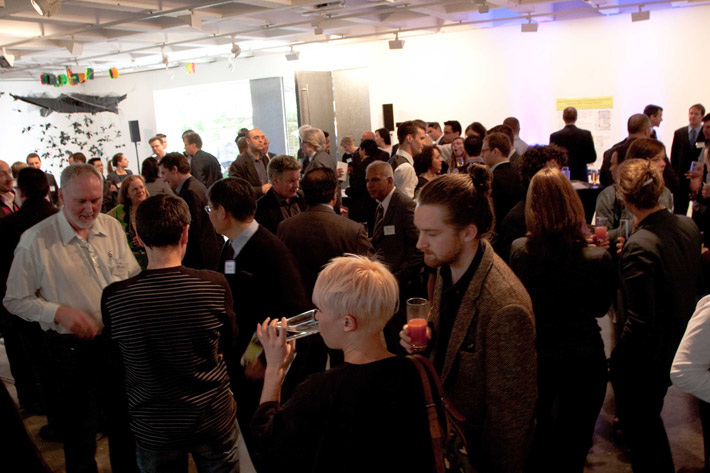
The opening attracted a range of industry professionals and the academic community
The laboratory test areas consist of two testing rooms and an outdoor simulation space that adjoins the windows of the two room test spaces. Each room is fitted with an array of sensors that measure a variety of objective conditions in the rooms.
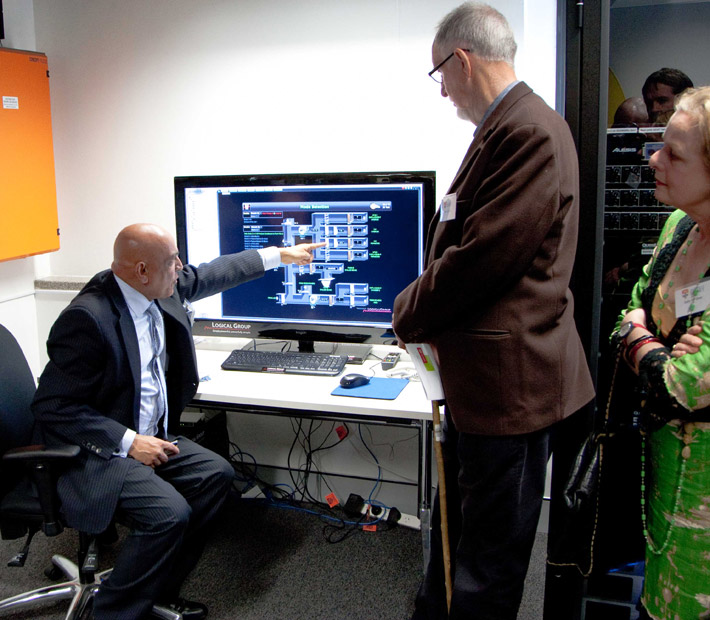
The sensor system plots all aspects of indoor environmental performance
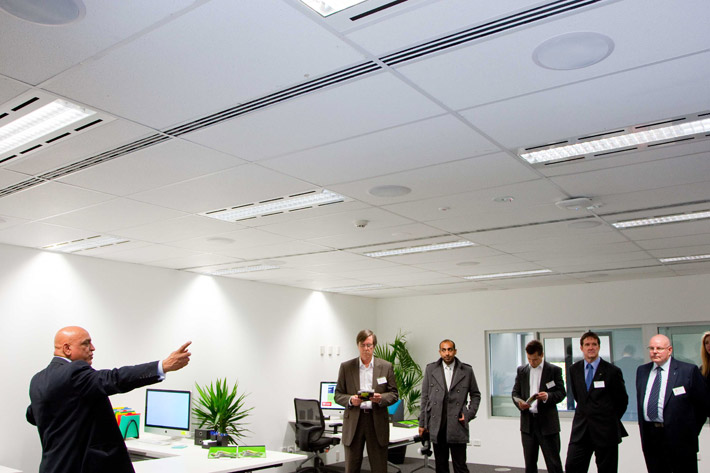
An office space that can simulate any sonic environment including low frequency rumble
Collectively these simulation labs enable realistic replication of indoor spaces within any Australian built environment. An important part of this environment is the effects of all forms of environmental noise and the sonic landscape on the people that will be working and living within this environment.
The product of the Indoor Environmental Quality Laboratory (IEQ) will form the data platform for the new regulatory approaches and standards for the future Australian built environment, and also provide the scientifically validated basis of such regulations.
To provide the sonic environment within the labs, a sophisticated Quest Engineering audio system has been designed and integrated into the lab spaces to realistically simulate every possible environment from heavy industrial, urban office, inner city residential (under a flight path etc) and most other areas where a sonic landscape is present.
The Laboratory was officially opened in late August by Greg Combet, the Australian government Minister for Industry and Innovation and Minister for Climate Change, and Energy Efficiency.
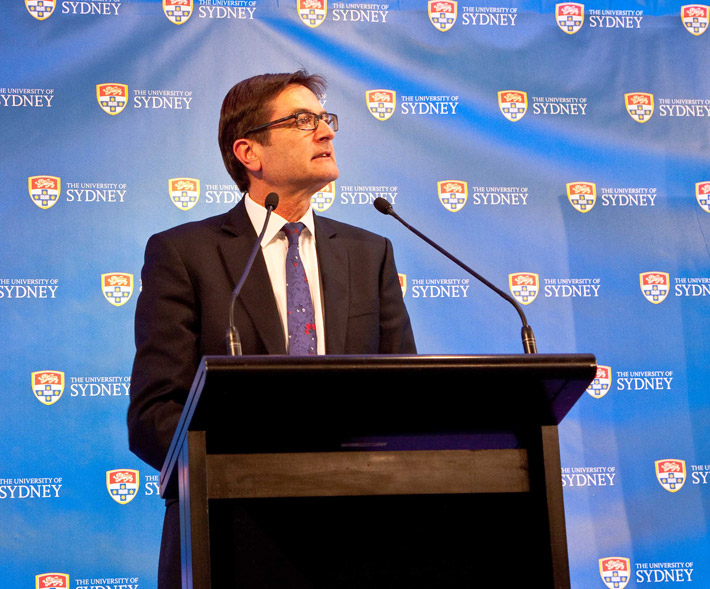
Greg Combet opening the facility
The Quest Audio system comprises eight Quest amplifiers four of them 4 channel model QTA series) and a quantity of Quest QTC series ceiling speakers, MS series speakers, QS350i speakers and HPI-18LP sub bass. This system is configured through a multi- channel DSP system to run a series of programs that can replicate a very realistic sound-scape that that is a very convincing analogue for the real world.
|
|
|
|
|
|
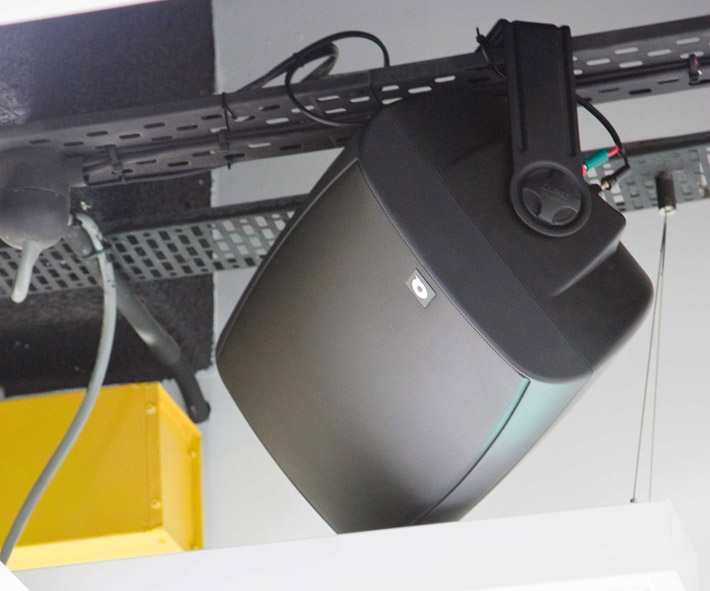
MS 801 Enough punch to get through a false ceiling
